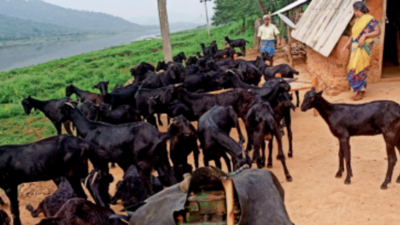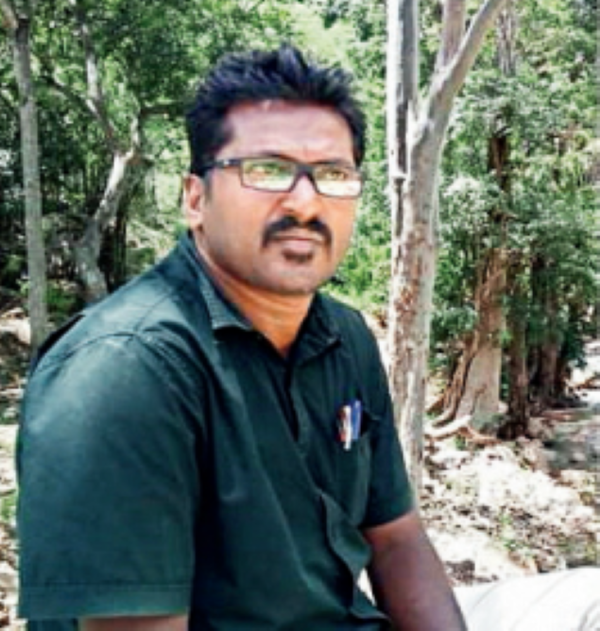
Khushi Munuswamy Veerappan He ruled the jungles of three states for nearly three decades, killing more than a thousand elephants, felling tens of thousands of sandalwood trees, and killing anyone who tried to stop him. Then, on October 18, 2004, he was shot three times, once in the forehead, hip and ribs.
Media reports said many people in the “village of Veerappan” were in mourning. Many others celebrated the end of banditry.
The fight to kill or capture Veerappan is expected to come at a cost tamil nadu and Karnataka Over Rs 100 crore (not to mention the ransom allegedly paid by governments and politicians).

In this deadly game of cat and mouse, Veerappan and the government claim they are fighting for a better tomorrow for the people in and around the forest.
So what has happened to the tribal areas of Erode, Coimbatore, Nilgiris, Dharmapuri, Krishnagiri and Salem that Veerappan and his gang once ruled? ?
First the positive side. The area now has roads, electricity, primary health centers and ration shops. “As long as Veerappan is alive, most government officials will not have the courage to enter these areas.
Since his death, the country has tribal people Said P Sivasubramaniam, a Tamil journalist who first met Veerappan in the early 1990s.
The second positive factor is the reduction in police brutality. S Balamurugan, an advocate and member of the People’s Alliance for Civil Liberties, whose book Sholagar Dhotti chronicles police brutality during the Veerappan chase, said that almost all cases in Veerappan Those arrested were either acquitted or died in prison.
A third positive is that the government is distributing pattas to at least some people displaced by the two-year hunt for Veerappan. Aptaraj, coordinator of the Karnataka Marthali Tamil Association, said those who returned home hoping to rebuild their lives found themselves being called aggressors.
“This is because when people left the villages, they didn’t have patas. We are fighting for patas now, and in some local governments it was actually given to them,” he said.
Now, on to the not-so-good changes that occurred after Veerappan was shot. Real estate agents replaced tribals who had vacated their homes caught between Veerappan and the police. Sivasubramaniam said resorts were mushrooming in the forests without any regulation.
Tribal activist Vice President Gunasekaran also said tribals are being driven out of their traditional habitats. “After mainlanders bought land here, they no longer planted millet, but planted cash crops such as plantain and tomatoes.
These cash crops consume a lot of mountain water, which impacts both humans and wildlife,” he said. Even 18 years after the law was enacted forest rights Tribes still face difficulties in accessing small forest products such as honey under the French Act (FRA).
“As a result, both young and old moved to places like Val parai and Munnarto to work as laborers in the tea plantations,” Gunasekaran said. He wanted a separate tribal development department and not an affiliation with the Adi Dravidar department. “Only then can the tribals at least get priority group ration cards. Our counterparts in Karnataka are well taken care of. They are even given eggs and ghee as ration,” he added.
Karnataka has also created a new wildlife sanctuary, Malai Mahadeshwara, and launched jungle safaris in Cauvery wildlife sanctuary Attract tourists and create employment opportunities for tribals.
Sivasubramaniam said such measures have not yet been taken in the forest areas of Tamil Nadu ruled by Veerappan. But there is another reason for tribal dissatisfaction with the forest department in Tamil Nadu.
“When Veerappan was alive, we used to take our cattle to the forest for grazing. Then there were no restrictions. But now the forest officials have started fining us.
Because of these restrictions, we ended up selling our cattle. He only has 20 to 30 now.
What about the younger generation? How does it view Veerappan? Anburaj, a former colleague of Veerappan, spent 18 years in jail and now works with the tribal in Anthiyur block of Erode district. “Young people are falling victim to social media narratives.
Unless they get proper education, another Veerappa may rise in these forests,” Ambraji said. He wants a separate education system for tribals, claiming government-run residential schools in tribal hamlets are ineffective because most teachers don’t want to work there.
At present, it seems that the rehabilitation of the victims of the Veerapa incident will not be completed even for another 20 years.







